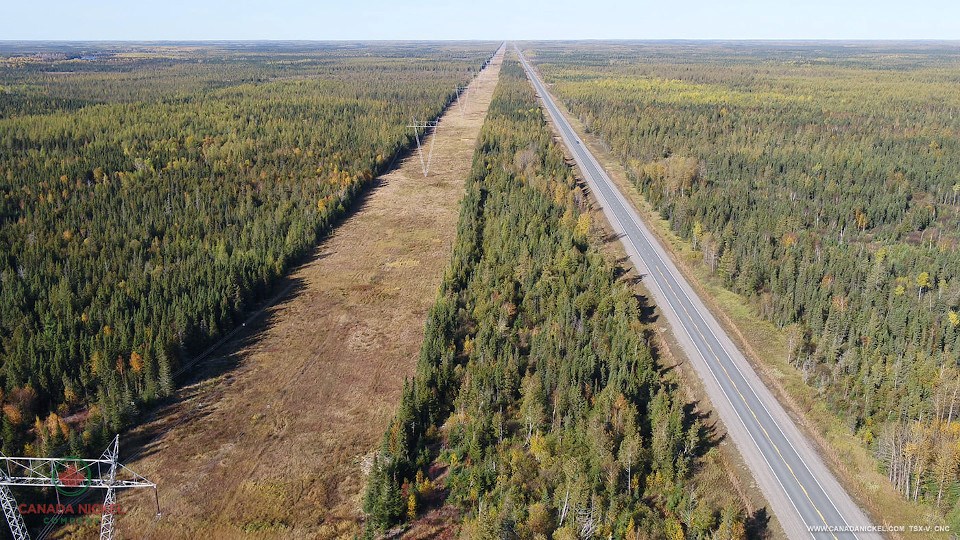An emerging nickel player in Timmins has inked another agreement with an area First Nation this week.
Canada Nickel Company announced the signing of a memorandum of understanding (MOU) with Taykwa Tagamou Nation, near Cochrane, considered a first-stage, stepping stone, agreement in building a potential business relationship with the junior mining company. It's a non-binding agreement that both sides said will lead to a more definitive agreement down the road.
Earlier this week, Canada Nickel signed an MOU with Matachewan and Mattagami First Nations.
“Canada Nickel is fully committed to the responsible development of the Crawford Nickel-Cobalt Sulphide project to deliver NetZero Nickel and Cobalt products," said chair-CEO Mark Selby.
The Toronto junior miner has a fast-growing, high-grade, advanced nickel project on its Crawford Project, north of Timmins, which places the discovery in the world's top 10 list of nickel sulphide projects.
"From the very beginning, our approach has been to work with First Nations and local stakeholders as partners in order to create shared value through economic opportunities, while also being respectful and responsible stewards of the natural environment," added Selby.
"We welcome their innovative partnering approach and their support of our efforts to move forward on the development, permitting and construction of the project.”
As a signatory of Treaty 9, Taykwa Tagamou Nation is a Mushkegowuk Cree community that's part of Treaty 9. Their traditional territory is within the Abitibi, Moose, and Mattagami River basins, including on both sides of the Highway 101 corridor. The First Nation is actively involved in forestry operations, mining, and hydro development.
As part of the MOU, Taykwa Tagamou Nation has lined up the capital to own and develop the electrical transmission infrastructure to supply Canada Nickel's proposed mine at its Crawford Project with a power supply.
Canada Nickel would rent this asset from the First Nation over the life of the mine or 20 years, "whichever comes first," said the company.
Taykwa Tagamou Nation would be granted an option to acquire a direct minority interest in Canada Nickel. The two parties said they are "considering other mutually beneficial business ventures."
“Our community favours a development project like Canada Nickel’s that provides a positive economic impact, minimal environmental impacts with a commitment to deliver NetZero products, and has the foresight to engage with Taykwa Tagamou (TTN) during the early stages of development,” said Chief Bruce Archibald.
“We are ready to support Canada Nickel’s Crawford project through the backing of our strong investment consortium in Canada and the U.S., and with the deep utility project and operation experience we have on our team.”
In 2017, the First Nation, through its subsidiary Coral Rapids Power, co-invested with Ontario Power Generation in the 28 megawatt Peter Sutherland Sr. Generating Station.
“Through our success stories and business partnerships, we are taking a business approach to each development opportunity within the territory that ensures us a seat at the table. We intend on expanding our generation footprint and launching an independent network for all new and rebuilt transmission projects within our territory. This network will be fully integrated into the Ontario power grid under the oversight of the IESO.”
Energy, Northern Development and Mines, and Indigenous Affairs Minister Greg Rickford sent his congratulations.
"Our government is proud to support First Nation-industry partnerships like TTN and Canada Nickel’s that create real economic development and job opportunities in Northern Ontario.
“Innovative partnerships like this one are outstanding examples of how First Nations and Ontario’s mining industry are leading the way in sustainable business development and corporate social responsibility. With TTN’s partnership and leadership in the region, the Crawford Nickel-Cobalt project is well-positioned to deliver the zero-carbon nickel and cobalt that the electric vehicle industry will need in the coming decades.”




